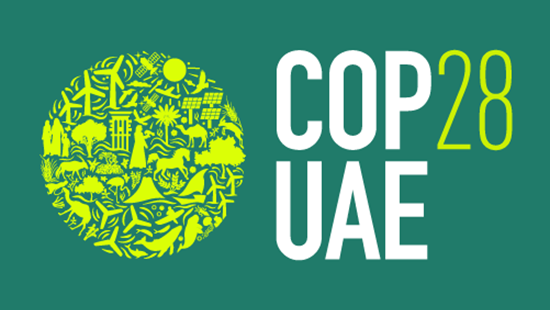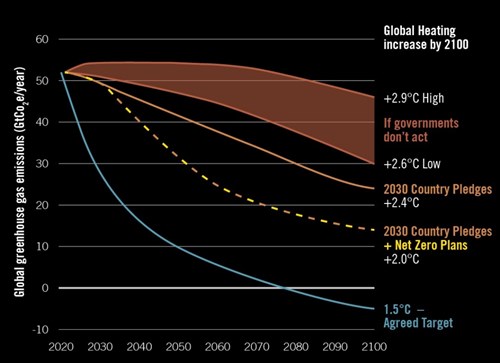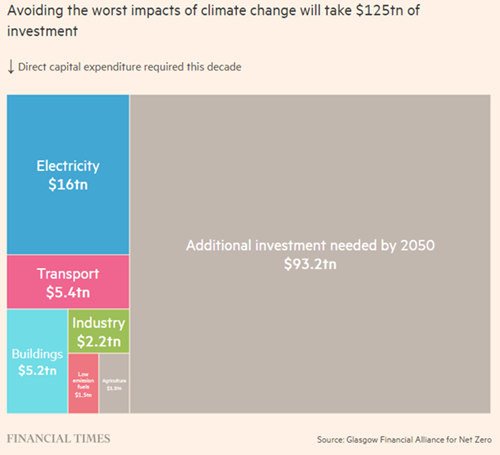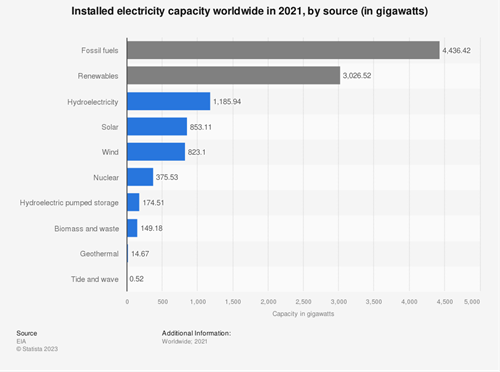
A comprehensive what, where, who, how, and why of COP28.
It’s that time of year again! Get the hot cocoa ready, and gather around the TV for one of humanity’s greatest annual spectacles. No, not Christmas silly! It’s the annual Conference of the Parties, COP28 to be specific.
You’ll have to forgive my sarcastic entrance to this piece. This spectacle simultaneously reflects humanity’s highest hopes while revealing humanity’s greatest flaws – much like the Game of Thrones finale, we have great aspirations going into the event only to often come out the other side deflated and wanting more. Already some data is suggesting that this COP is receiving less attention than last year’s iteration, perhaps reflecting an increasing sense of hopelessness.
But, ever the optimist, perhaps this year will be different – let’s dig in and find out…
What’s the big picture?
COP28 will commence on November 30th and will likely see more than 70,000 people make their annual pilgrimage, this time to Dubai’s Expo City, to engage in two weeks of heated debate regarding global climate policy.
The representatives of the 198 states and parties attending will be wide-ranging, from politicians to activists, monarchs to businesspeople. All of these parties will come together to hash out a concluding report on how the globe intends to tackle the climate crisis moving forward, with a balance to be sought between climate necessity and global economic and geopolitical headwinds.
Given the nature of incremental climate change, the stakes of these meetings’ outcomes continue to get larger. Just this year we have seen Greek and Hawaiian islands on fire, New Yorkers feeling the repercussions of Canadian wildfires, global record temperatures, fish populations depleting, Antarctic ice disappearing, and more. Considering that, according to a PWC report, “55% of Global GDP (approx. US$58 trillion) is moderately or highly dependent on nature”, we should all be concerned by current trends and the economic impact we will soon begin to see.
With many high-profile individuals, including the Pope and King Charles, attending and voicing concern, it speaks to how widely these issues proliferate into our collective consciousness. And with the UN Secretary-General recently coming out with language that the world is on track for a “hellish” 3°C of global heating, as seen in the graph below, this contextualises how important a proactive outcome is from this COP – a COP hosted in the United Arab Emirates, a country “among the world’s 10 largest oil producers” (https://www.trade.gov/country-commercial-guides/united-arab-emirates-oil-and-gas).

Source: Amnesty International
Why the UAE?
This year’s COP president is Sultan Al Jaber, a man wearing many hats. Notably, Jabar is chief of the UAE’s national oil company, Adnoc, as well as chairman of Masdar, UAE’s renewable energy company.
On one side of things, an argument does exist that it is time to try something different in order to better bring diametrically opposed points together, and perhaps having an individual with both exposure to fossil fuels and renewables is a way of doing this. The other perspective, as put eloquently by campaign group 350.org, is “it is the equivalent of appointing the CEO of a cigarette company to oversee a conference on cancer cures". Despite the facetious nature of that comment, it does ring true that there is an irony in, effectively, an oil baron hosting talks to combat what his day-to-day actions strongly contribute to. However, I must say that upon further investigation, I find the argument of having a fossil fuel specialist as the de facto main liaison officer a potentially good thing.
There is no way to transition to a net zero world without positive actions from big players in the fossil fuel industry, and having someone they can identify with as leading this changing process may induce more allure in coming to the table, and that they won’t be immediately relegated to being the bad people in the room. At the end of the day, we need energy to survive as a species, so these companies’ continued existence in the short-term, and active transition, is a necessity for our future.
I am also, though, reminded of the optimism bias, “the tendency to overestimate the likelihood that good things will happen to us while underestimating the probability that negative events will impact our lives”. So, whilst Jaber is bullish about his capacity to bring all parties together, for example through his Global Decarbonisation Alliance – with members consisting of energy companies and other heavy emitters needing to commit to achieving net zero carbon emissions from their operations by 2050 and reducing their methane emissions to “near zero” by the end of this decade, we must remember how severe the situation is, even more so in the context of competing global interests that we shall discuss later in this piece.
In light of my positive remarks, scepticism does remain rife about the UAE’s ability and drive to reach a positive conclusion. These ‘false hope’ concerns were flagged only a couple of days ago when leaked documents brought to light that the UAE was planning to use its hosting position to pitch oil and gas deals to foreign governments, though separate Financial Times analysis has also shown that “UAE state companies and funds can be linked to almost $200bn in investments around the globe in the year leading up to the COP summit, mostly in green energy”. Furthermore, for a COP pledging to allow ‘voices to be heard’, many are pointing out that the UAE has a weak track record with human rights and many activists are stating that they are worried about the reactions to their demonstrations.
It is a divisive COP. No doubt about it. But the job of the COP President is to unite people around a set of commitments, and we eagerly await Jaber’s efforts.
What are the key commitments?
Entering into each COP, we have a relatively good idea as to what will be the major points of discussion, and this year is no different. Here are the three which have caught our eye:
Climate financing
This was also a key topic of discussion at COP27 last year, but whilst last year it was agreed to in principle, the task at hand in 2024 is to formulate how to put the fund into practice. And rest assured, it will be a hotly contested debate near the top of Jaber’s agenda.
So, to jog all our memories, the Loss and Damage Fund was agreed upon as a means of more developed nations helping to pay for the damage that climate change has caused in poorer nations. On the face of it this is a noble, and arguably deserved, pursuit; as the Senegalese politician Abdoulaye Diouf Sarr points out, the least-developed countries “are home to over 14 per cent of the world’s population but use only one per cent of emissions, and yet we are the ones suffering the greatest costs of the climate crisis”. This is in stark contrast to the US for example, arguably regarded as the world’s current hegemon and responsible for 13.5% of emissions.
However, whilst the principle of the fund is well-natured, the deal-making behind the scenes is anything but. Most talks so far have ended acrimoniously and largely centre around a finger-pointing argument of who should be paying who – which we shall explore further when we look into the stance of the key players at COP28 below.
Even beyond the financing of this fund, climate financing in general shall be taking centre stage due to the scale of investment required to meet Paris Agreement goals, as can be seen below.


From an investor perspective, the allocation of capital to support the Paris Agreement goals is monumental and signalling of shifts that we at Ravenscroft highlight as the ‘changing world’. We, as investors, need to remain cognisant of this changing landscape in light of the data above and, through balanced optimism and pragmatism, invest accordingly in our clients’ interests.
Nuclear Power
Unlike the climate funding above, this commitment has flown a bit more under the radar, though also from our point of view could have big ramifications.
The US has come out the blocks stating that they will push for a tripling of the amount of installed nuclear capacity globally by 2050. With staunch environmentalists often being against this technology, it has rarely received much attention at the COPs – this year however could see an about-face.
One could argue that all options should be on the table when it comes to seeking a means to transition our world to net zero, and nuclear power does have notable environmental benefits when compared to traditional fossil fuels, such as:
- Very high energy density;
- A plentiful supply of key ingredients such as uranium;
- A proven track record as an energy source;
- Lack of intermittency; and
- Can be located where it is needed.
Greater, more sustainable energy will be needed moving forward, not just for our continued living but also to pursue emerging technologies such as AI – which in turn will require great amounts of energy for their data servers and supercomputers. So, it could be considered a positive that the US will be followed in suit at least by the likes of the UK, France, Sweden, Finland and South Korea to sign such a pledge as proposed.
Phase Out or Phase Down
The phase out versus phase down debate was also a significant debate last year, with the wording changed from Phase Out of fossil fuels to Phase Down at the last moment in order to appease the biggest emitters in the room.
Whilst to mere mortals such as me and you, there wouldn’t appear to be a great level of difference between the two phrases, for the COP participants, however, nuance is everything. The significant nuance here is that the latter means large emitters, particularly those in the coal space, can keep opening new coal plants etc without a hard and fast date on stopping the use of fossil fuels.
Such a date is necessary in limiting our emissions to the goals set by the Paris Agreement in 2015, of which shall be subject to a stocktake this year. Over the past two years, the UN has been collating information of parties’ actions towards the Paris Agreement, and this COP will unveil the stocktake conclusions – highlighting how much, or rather how little, progress we as a World have made towards our ambitions of tackling the climate crisis.
We are very much seeing two camps forming here, supporters of their respective phases.
The Phase Out group (which includes the USA, UK, France, Canada, Germany, Spain and Ireland) is very much a collection of developed nations whose primary source of income is not related to fossil fuels and have populations which are often more environmentally conscious.
The Phase Down group (China, India, Saudi Arabia and Russia) is, on the other hand, very much a collection of developing nations that see a lot of their income from exporting fossil fuels and have populations that are often still in the lower part of Maslow’s hierarchy and are therefore wanting their countries to pursue industrialisation – just as the above Phase Out countries have done before.
These are clearly diametrically opposing viewpoints, of which the onus is on Jaber and the UAE to bring all of them to the table to try to push for a way forward. It is obviously a tough balance act, to address the incredible climate challenges of ditching fossil fuels, whilst also not undermining developing nations and creating a greater wealth gap than already exists.
As such, we are seeing the UAE push forward with proposals for focusing on carbon capture and carbon credits, seen by them as a more equitable way of phasing down whilst also achieving net zero. The respective technological capability and efficacy of these two suggestions though is still up for debate.
Another focus of the UAE’s efforts is on the promotion of greater investment in renewable energies, leveraging off of Jabar’s aforementioned involvement in Masdar, with the host putting forward a tripling of renewable energy capacity by 2030. This is perhaps the most promising of the proposals raised thus far, with China, the USA, and India amongst the nations to agree on this goal.

The killer question of how to actually achieve this remains to be discussed at COP28, but its impact would be significant as demonstrated by the data above.
Who are the key players?
Harking back to my earlier comment on geopolitics being a fraught arena, nowhere else is this better exemplified than in the field of climate policy.
Bringing 198 states and parties together is an achievement in itself, but thinking for one moment that they won’t have shockingly opposing views is pure folly. The extreme cynic in me says that, at its very base, the outcomes of the COP boil down to power and act as another battleground to assert oneself on the world’s stage.
So, what are some of the key players hoping to get out of this year’s COP?
USA, UK & EU
- The US is pushing for an immediate end to new coal-fired power globally. They are also pushing for a Phase Down to eventually lead to a Phase Out, with emphasis on renewable energy and electric vehicles
- The US also expects greater participation in the Loss and Damage Fund from bigger polluters such as China and Saudi Arabia
- The US is pushing for greater adoption of nuclear energy
- Notably, US President Joe Biden is not attending COP28
- The UK has recently back-tracked on some of its climate goals, pushing some back and scrapping some altogether. But it remains committed to eventually achieving a Phase Out conclusion
- The EU has called for a global deal to phase out fossil fuels at COP28, with said resolution passing the European Parliament with 462 votes in favour, 134 against, and 30 abstentions
China
- China has, as of late, indicated that they are becoming more inclined to co-operate on climate change, as was shown in the recent meeting of Joe Biden and Xi Jinping. The US and China came away agreeing to accelerate the rollout of renewable energy. Also, significantly, both countries agreed to include methane and nitrous oxide in their 2035 climate targets, a breakthrough seeing that China is the world’s largest methane emitter and their previous commitments only covered carbon emissions
- China states that it is still considered a developing nation and thus should be a recipient of the Loss and Damage Fund, not a contributor
- China intends to continue building new coal-fired power plants and believes a Phase Out to be unrealistic, as a counterpoint it must also be remembered that China has the biggest renewable energy capacity globally
- Similar to his US counterpart, Chinese President Xi Jinping is not attending COP28
Saudi Arabia
- Saudi Arabia is approaching COP with its own take on Phase Out, suggesting that the focus should be on phasing out greenhouse gases, not phasing out fossil fuels. Whilst many of us conflate the two understandably, Saudi Arabia intends on continuing production, and burning, of fossil fuels and instead placing faith in emission capture technology
- Similar to China’s stance, Saudi Arabia opposes contributing to the Loss and Damage Fund
Russia
- Whilst Russia may still be considered a pariah on the international stage, that does not detract from the fact that it remains one of the world’s largest producers and exporters of fossil fuels – even in light of the sanctions. As such, they continue to have a powerful say at COP and their position remains that of opposing Phase Out
- Russia has even gone so far as to publish a new ‘climate doctrine’ which, despite having a 2060 climate neutrality target, suggests positive effects about climate warming and avoids linking climate change to fossil fuel combustion. So, to put it bluntly, even Phase Down will be a tough sell here
India
- India believes it should be a recipient of the Loss and Damage Fund and is calling for developed countries to acknowledge their past, and attached responsibility for greenhouse gas emissions, and subsequently make the biggest contribution to the Fund
- India is also of the opinion that it should be afforded the same opportunities that in the past developed nations had with regards to infrastructure, energy etc., hence it is only targeting net zero by 2070
- India has laid out plans to triple output from underground coal mines by 2038 and continues to be the second-largest coal producer after China. This is directly opposed to Phase Out
Brazil
- Brazil plans on launching a global financing system to support tropical forests, such as those found in Brazil, Indonesia, and the DRC. Whilst Phase Out/Down is still in the theoretical stage, this system has already been planned by Brazil as a fund which guarantees a rate of return and then excess is used to support the forests. In effect, this is a large-scale Green Bond
The World’s HorosCOPe
On the face of it, the UN is in a strong position given the amount of scientific information it has at its disposal. However, effective communication is required to showcase the importance of that information, and that is what the COP attempts to do.
The importance of this nowadays cannot be understated, with extreme weather etc. contrasting with many developing countries not inclined to transition their economy, and even developed nations backtracking on decisions – such as the UK allowing new oil drilling in the North Sea.
Solely having hope isn’t the solution, and whilst the UAE hosting may bring more pragmatism to the table, the narrative of them approving a large gas pipeline as recently as July this year is a point for concern about how well they shall direct these talks. We only need to look as far as the recent G7 Ocean Plastic Charter to see a pledge with no teeth, and how, given such great opposing viewpoints, we could see a similar outcome for COP28.
Still, it remains to be seen what Jaber shall accomplish, and everything currently is just speculation until the main event begins. In my role not as an analyst, but as a person – I wish him well, as trying to read a horoscope for the world’s climate currently can make for some scary reading.
Not to end on such a solemn tone though, I would like to state that at Ravenscroft, we are keeping on top of all these ongoings and the subsequent themes they pour into – and consequently stewarding our clients through this changing world to the best of our abilities. Should you have any enquiries about your investments, please do not hesitate to contact us.

